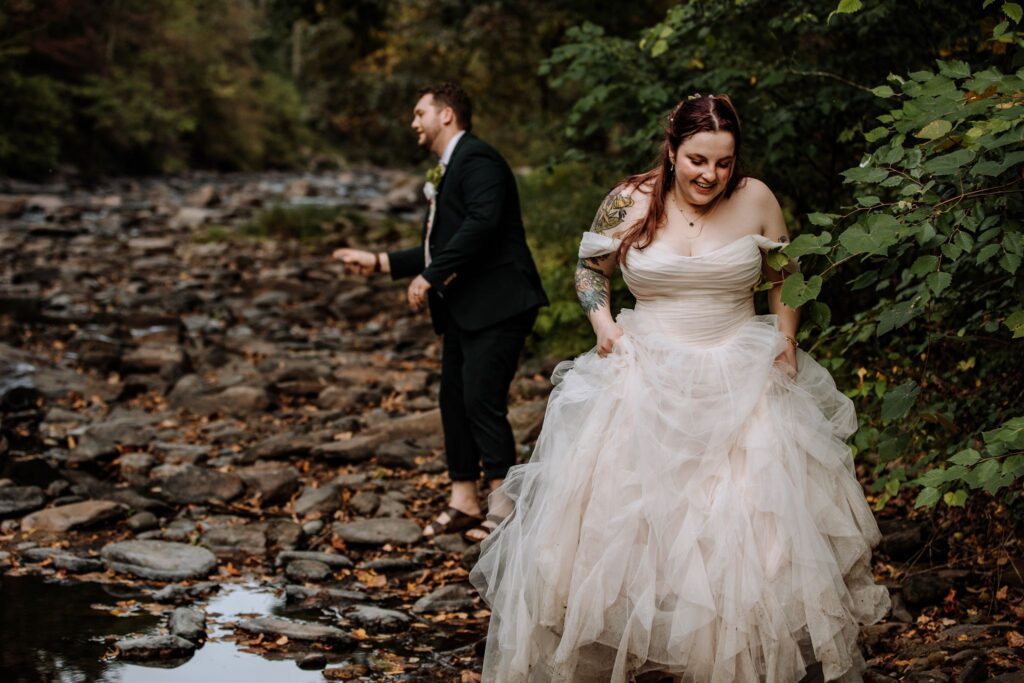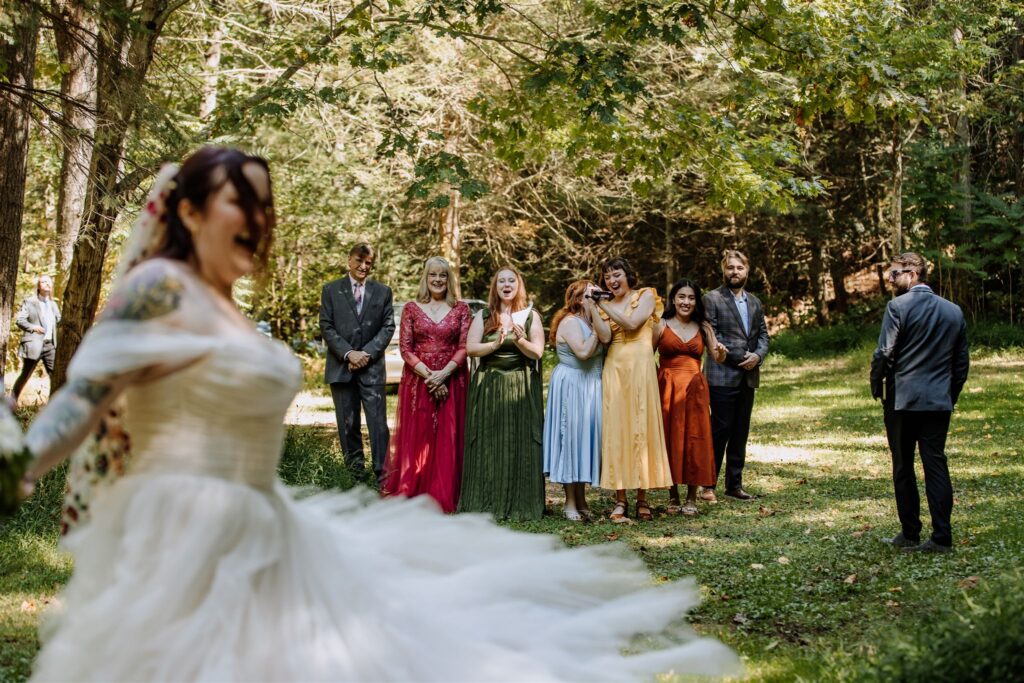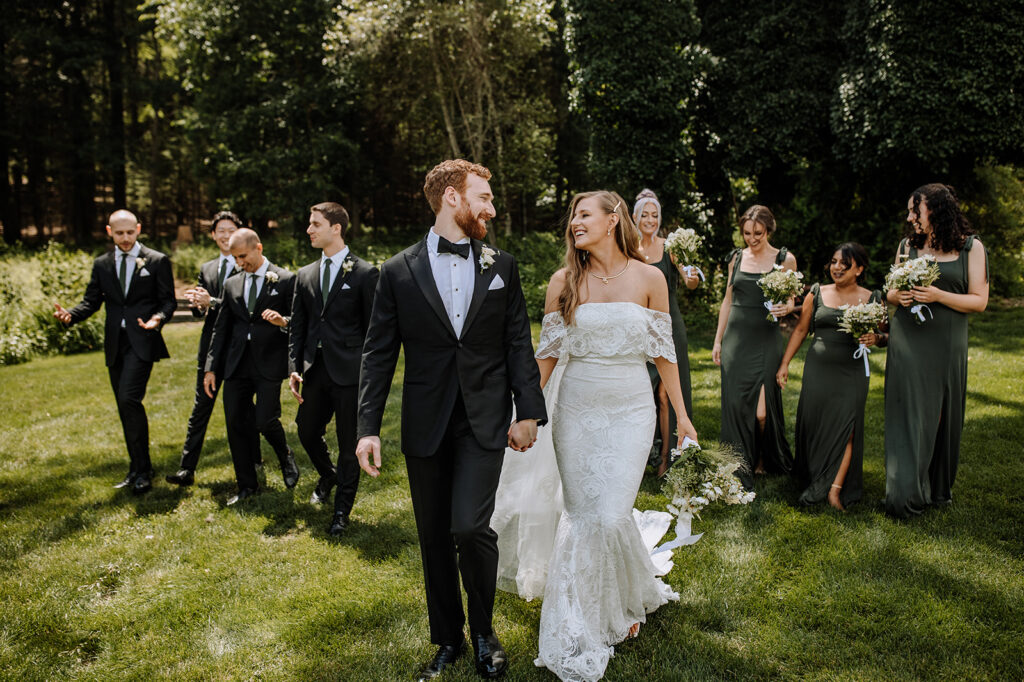We're a team of wedding, elopement and portrait photographers who put community over competition. We provide tips and resources for Photographers looking to up-level their businesses.
We're here to help When you join The Photography Business Academy
9 Steps for Relocating Your Photography Business: A Practical Guide To Moving Markets Without Starting From Zero
I see photographers relocating their businesses almost daily – students in our coaching program, friends on Facebook, folks moving for the military, family, or a new season of life.
Relocation brings its own set of challenges as a business owner, especially if you were well established where you are now, before the big move. Of course, moving also easily gets classified as a big life event – something that contributes to an overall sense of stress and anxiety…even before you have to think about things like business, finances, etc.
Overnight, it can feel like the strength you built in one market turns into uncertainty in another.
So…how do you navigate this big change?
The goal of this guide is to give you a clear path forward in 9 easy steps: what to expect, what to tweak, and practical steps you can follow so the transition feels manageable and, ideally, exciting!

1). First, Accept The Reset (So You Can Move Faster)
When you move to a new city, state, or country, you are resetting parts of your business.
Local SEO, vendor relationships, business partnerships, and word of mouth are all tied to a place much of the time.
When you leave that place, those assets stop working as well as they would if you stayed. That realization can trigger anxiety even for excellent photographers with solid portfolios and glowing reviews. For some of you, those creeping thoughts of “I don’t deserve to do well in the new place” might also feel like they limit your ability to succeed (don’t let them – they’re some trademark signs of imposter syndrome, common for many photographers and creatives in general!).
Let’s be honest for a second – this is the part that really, really sucks and can take away some of the joy and excitement of a move. This is doubly true if you already have leads coming in and have been booking new clients with any level of consistency. Acknowledging this makes it easier to actually start moving forward.
With that said, here is the mindset shift that helps: yes, you are resetting – but you are not starting from zero.
You already know how to deliver, you have proof of work, and you understand how clients move from finding you to booking you.
In practical terms, you are stepping back to your second or third year in business, not year one.
That is the stage where you hustle to create steady demand while tightening systems you have already tested. Because you have done it before, you can do it again – faster and more efficiently.
Instead of feeling discouraged by the reset, recognize the strengths you are bringing with you.
Your skills transfer to the new market, your body of work still matters (and is likely very transferable to your new location), and your systems for managing clients remain intact.
What needs the most retuning are your targeting, messaging, and content…and simply starting to get yourself out there in the new area so you can get better connected.
Need help mapping out your reset? Join the Photography Business Academy to get coaching, accountability, and proven frameworks for building or rebuilding in a new market.
2). Clarify What Stays The Same (And What Changes)
Start with your purpose and audience.
If you love weddings, elopements, families, seniors – or a combination – there is no rule that says you must change your niche just because your zip code changed. Many photographers keep the same core offer and do well.
You may very well choose not to make any changes like this (and that’s great!).
At the same time, relocation is a chance to pause and reflect.
Do you want to keep serving the same audience in this new place?
What shifts in values or preferences might your new clients have?
For example – a family in coastal California may want breezy beach portraits while a family in a Colorado mountain town values rugged outdoor scenery. Same audience, but with different expectations and style cues. Thinking this through in advance gives you clarity before you begin marketing.
Is there anything about you and your wants and desires for your photography business that has changed in the recent months or years leading up to this move?
There’s a lot of questions to ask yourself, and being truthful with yourself is going to lead you down a path with better results.

3). Brand Audit For A New Market
Branding is broad, so let’s aim to make it concrete.
Your job is to make sure your brand still fits and still stands out.
There are a lot of things that go into creating a meaningful brand – everything from getting clear on the clients you want to serve, knowing how you are standing out against your immediate competition in the new region, and (of course) the visual aspects of your brand so they appeal to the right audience.
While this is a comprehensive topic in it’s own right (and one we go into great detail on in The Photography Business Academy), as some starting points –
1). Begin by researching your new market.
Look at other photographers in your niche, study their price ranges, their style, and the promises they make. Look at their visual brands and what sort of messaging they use in their website copy and social media. Pay attention to what seems overdone and where you might stand out.
This research will help you refine your unique selling propositions (USPs) so that your strengths are distinct compared to others in the area.
2). Next, review your portfolio through the lens of the new market.
Ask yourself if the galleries you showcase will resonate with local clients.
If not, consider planning a few shoots early on that highlight local backdrops or venues.
Finally, look at your visual branding – your colors, typography, and tone. If they align well with the new market, keep them. If not, adjust while staying true to your core identity. This process mirrors the early days of business building, but with the advantage of experience behind you.
As we mentioned, if you need help getting your photography branding more solid in this move, we can help you in The Photography Business Academy!

4). Validate Your Offer With Quick Market Research
Most large metro areas (like New York City, Philadelphia, Los Angeles, etc.) want the same things: weddings, elopements, family portraits, headshots, brand work.
If you are moving from one big city to another, you’ll likely find plenty of demand. There’s a lot of people in a small area, and plenty of photographers who want to serve them (and like we talked about in the previous section, it’s just for you to make sure your business stands out to help attract them!).
Smaller towns are a little different sometimes.
If you’re leaving a major metro for a rural area, you’ll want to confirm that there is enough client demand to support your pricing and services.
A few practical ways to validate this:
- Scan local vendor networks to see how many venues and planners exist (if you’re in the wedding industry).
- Search community groups and Facebook pages where people ask for photographer recommendations to get a pulse on frequency of requests and the like.
- Search through Instagram hashtags to find photographers in the place your moving to – are they posting regular work in that area?
- Review competitor pricing and booking language.
- Talk to local vendors about what clients are asking for and what’s missing in the market.
These steps give you a clearer picture of whether your offers will thrive as-is or whether you should adapt them.
In addition, you can do more research into the demographics of the new place you are moving to and collect information about the people you’ll potentially be serving like common careers, family annual incomes, and other characteristics. This is a topic we cover extensively in walkthroughs in The Photography Business Academy to help you get even more clarity!

5). The Marketing Plan: What To Do And When
When you relocate, branding and marketing are the levers that move you fastest.
This is also the part that often seems the most daunting – we get it!
Think in three lanes:
- location specific content
- broader strategy shifts
- immediacy versus time
1) Location Specific Content
This is your front line.
Start building it before you move if you can.
Write blog posts about local venues, parks, and neighborhoods. Create planning guides for families or couples in your new city. Even if you don’t have photos yet, you can publish valuable content using stock images or placeholders and update later with your own work.
On social media, start shifting hashtags and geotags to match your new area so you begin showing up in those local searches.
Organic SEO takes time, often months, to build momentum.
That’s why creating this type of content early is so valuable – it allows your website to begin ranking before you even arrive.
Let me give you a clear example of how I’d do this if I was relocating my photography business soon:
I would create impactful landing pages targeting the most prominent, in demand keywords in the new area (typically around “[Your Location] [Your Niche] Photography” types of phrases). This could be a single page or multiple (depending on the market you’re moving into and wanting to serve).
In addition, I’d create in batches 20-30 pieces of content targeting locations in the region – specific wedding venues, restaurants, businesses, etc. These could be pieces meant to add photos to later, or even simple “listicle” style articles like “Best Engagement Photo Locations in [Location].”
I would do all of this aggressively, now – before I actually move.
If I knew my move was 6 months from now, I’d aim to create all this content in 1-2 months and just get it out the door. I can always come back and further refine and optimize things, but having nothing in place when I arrive to my new home is going to hurt more than imperfection.
2) Broader Strategy Shifts
With some local marketing moves being made, we now want to step back and look at the overarching marketing strategy that you have and decide on next steps.
If you have success in your current area (before moving), we’d look to translate your current marketing and sales funnel that is working to fit the new environment.
For example, if you previously shared tips for styling beach sessions in San Diego, you might now share advice for winter layering in Denver. Adjust your lead magnets, guides, and social posts to reflect the challenges your new clients actually face. Partnering with local vendors to create collaborative content can accelerate the process while also helping you build relationships.
This is the part of relocating that can often feel the most blurry because it is not one-size fits all.
While something like organic SEO and blogging can benefit every photographer, choosing 1-2 additional marketing channels to focus on is what we typically would recommend (especially small photography studios with 1 person managing them).
3) Immediacy Versus Time
Organic marketing compounds, but is (often) slower moving.
For example, SEO results generally start becoming noticeable within 4-6 months, though it can take 6-12 months or even longer for significant improvements, especially for new sites or competitive keywords. The exact timeline depends on factors like industry competition, domain age, content quality, and consistency.
If your timeline is tight, layer in short-term tactics like running ads, offering launch promotions, or hosting mini sessions to quickly seed your portfolio with local work. You can also keep booking in your old market for a season while you build stability in the new one. This blend of short-term tactics with long-term SEO ensures you’re not left in a gap between markets.

6). Retarget Your Website For The New City
Your website is like your storefront, but in the online world.
When a potential client lands on it, they should feel immediately that it is made for them.
We have seen a lot of photographers move to a new area and ask “why am I not getting any bookings?”, but then we go on their website and still find it’s set up for their old city (sometimes across the country). This is a massive mistake.
Here are some of the changes you should be making before moving, to set your website up for attracting clients in the new region –
- Update your homepage (or create a dedicated landing page) targeting your new city’s keywords.
- Swap portfolio images to reflect local backdrops. This should be done both on a literal portfolio page, as well as just in the images showcased around the website.
- Rewrite copy to address your new audience’s values based on your revised brand identity.
- Keep old content live if it’s still ranking, but prioritize making the overall impression of your site unmistakably tied to your new market. Keep in mind, you can use things like specialized plugins to help you hide content from being easily found on your website, while still making it visible to search engines.
If you need deeper help here, our Websites For Photographers course will walk you step by step through designing a site that attracts and books clients in your new location.
7). Logistics That Can Make Or Break Your Move
So far in this post, we’ve talked extensively about the branding and marketing implications of relocating your photography business…and while those are crucial to think about and make changes to, the reality is that relocation is not just about marketing – it’s also about trucks, boxes, office equipment and gear.
You know – all the things you use to run your business.
How you move your business equipment matters.
Some photographers can pack their life into two bags, while others run studios that potentially require trucks and movers (or a big sale to get rid of things in your current area before the move).
Double-check that your business insurance covers gear during transit and in your new region.
Plan buffer time once you arrive to get settled, set up your space, and scout new locations.
The key takeaway here is to simply treat this as part of your business plan, not just personal logistics.

8). Vendor And Community Ramp-Up
SEO builds slowly (but has massive impacts over time and in creating consistency in lead generation and bookings – do not forget it!), but relationships can build quickly.
That’s why connecting with local vendors early is so important.
Introduce yourself to planners, venues, florists, and officiants. Ask about preferred vendor lists and find ways to collaborate. Second shooting or assisting at events can also help you plug into the local scene while building credibility. This kind of networking not only gets your name out but also gives you a feel for the local culture.
9). Common Pitfalls To Avoid When Relocating a Photography Business to a New Area
One of the biggest mistakes photographers make is simply waiting too long to make changes that would benefit them in the future.
While some moves are unexpected (such as if you have a spouse in the military and suddenly get relocated to Texas within just a few short weeks), for many photographers, there should be at least a few months time to start getting things prepared for the change. You need to take full advantage of this time.
As we covered throughout this post, some of the things you want to make sure you do once you find out you need to move your photo business includes:
- Get clear on things you need to know about the new market – demographics of people there, competition, demand for photography services, etc.
- Make refinements to your brand to attract the new audience
- Make updates to your website to reflect the new market
- Adding local content to your website and blog to start building organic search traffic and authority
- Prepare for other changes you’ll need to make rapidly as you get closer to the move date (such as updating your social media bios)
Final Thoughts (And A Nudge)
Relocation resets a lot for your business (and personal life), but it also gives you permission to rebuild smarter. Your skills transfer. Your proof of work transfers. With clear positioning, targeted SEO content, and a mix of long-term and short-term marketing tactics, you can land in your new market with confidence.
If you want more guidance for building your business in a new location, join the Photography Business Academy. Inside, we’ll help you map your marketing plan, refine your systems, and give you the community support you need to thrive through your relocation and beyond.

Honesty is a cornerstone of Shoot and Thrive, so we want you to know that some links in this post are affiliate links. This means we may earn a commission if you make a purchase—at no additional cost to you. We only recommend products and services we trust, have used ourselves, or have thoroughly researched based on industry feedback. Our goal is to provide solutions that genuinely help, whether they come from our direct experience or the collective knowledge of the photography community.
As photography business educators, we believe it's important for educators in this industry to be active photographers themselves. The images used throughout this website were taken through our photo studios - Hand and Arrow Photography and Marshall Scott Photography, except for stock images or if otherwise noted.
Turn Your Passion into a Thriving Business
Transform your photography business into a streamlined, profitable venture that gives you more time, freedom, and confidence.
With the Photography Business Academy, you’ll have a step-by-step guide to building the business—and life—you’ve always dreamed of. From branding to marketing, finances to client experience, we’ve got you covered.
Navigation
Shoot and Thrive is an ethically created resource for photographers needing mentorship, coaching, or business education. We believe in creating content that’s easy to digest and retain while incorporating educational best practices, so you gain clarity and confidence as a business owner.